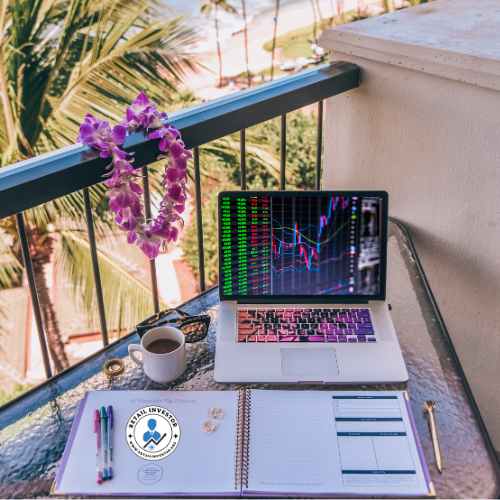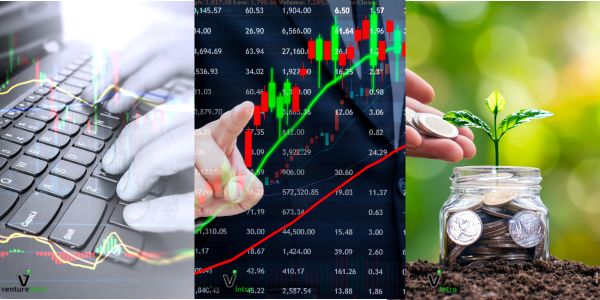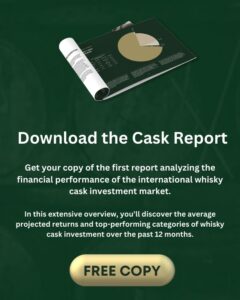Best Day Trading Books for Beginners

1. Introduction to Day Trading
- Book Title: “A Beginner’s Guide to Day Trading Online” by Toni Turner
- Description: This book provides a comprehensive introduction to day trading, covering the basics of how the stock market works, trading tools and technologies, and fundamental trading strategies. It’s written in an accessible style, making complex concepts understandable for beginners.
2. Technical Analysis Fundamentals
- Book Title: “Technical Analysis For Dummies” by Barbara Rockefeller
- Description: An excellent resource for understanding technical analysis, this book breaks down technical indicators, chart patterns, and how to interpret market signals. It’s crucial for day traders who rely heavily on technical analysis to make quick trading decisions.
3. Psychological Aspects of Trading
- Book Title: “Trading in the Zone” by Mark Douglas
- Description: This book delves into the psychological challenges of trading and offers insights into how to develop the mental discipline and emotional control needed to succeed in day trading. It’s a must-read for understanding the mindset of successful traders.
4. Strategy and Execution
- Book Title: “Day Trading and Swing Trading the Currency Market” by Kathy Lien
- Description: Kathy Lien provides a deep dive into currency day trading, offering specific strategies and market insights. While focused on forex, the book’s principles can be applied broadly, making it valuable for day traders in various markets.
5. Risk Management
- Book Title: “The Daily Trading Coach: 101 Lessons for Becoming Your Own Trading Psychologist” by Brett N. Steenbarger
- Description: This book emphasizes the importance of self-coaching and risk management, offering practical advice and exercises to improve trading performance and resilience. It’s essential for managing the high-risk environment of day trading.
6. Advanced Day Trading Concepts
- Book Title: “Mastering the Trade” by John F. Carter
- Description: Catering to those who have grasped the basics, this book explores advanced trading strategies and setups. It includes detailed case studies and real-world examples, providing a deeper understanding of day trading dynamics.
7. Practical Tools and Platforms
- Book Title: “The Complete Guide to Day Trading” by Markus Heitkoetter
- Description: This guide offers a practical approach to setting up a trading workstation, choosing the right software, and understanding the mechanics of placing trades. It’s a hands-on manual for the day-to-day operations of a day trader.
8. Market Analysis and Insights
- Book Title: “How to Day Trade for a Living” by Andrew Aziz
- Description: Aziz provides insights into analyzing market trends, picking the right stocks, and developing trading plans. The book is known for its clear explanations and actionable strategies, making it a popular choice among beginners.
Conclusion
- Summarize the importance of continuous learning and self-improvement in day trading, highlighting how these books provide a solid foundation for beginners to start their trading journey.
This outline offers a balanced view of the essential aspects of day trading, from technical analysis and strategy to psychology and risk management, providing beginners with a comprehensive learning path through literature.

Best Stocks for Day Trading
How to find the best stocks for day trading is science, logic and tools to help you sort data to make a personal decisions. There is not 100% proven method to success but many attempts to help guide someone who wants to be a day trader!
Here is some logice to help narrow your search.
1. Stock Screeners
- Description: Stock screeners filter stocks based on specific criteria like market capitalization, sector, earnings growth, dividend yield, and many other financial metrics.
- How to Use: Set your desired criteria in the screener to narrow down the list of stocks that meet your investment or trading objectives. This helps in identifying potential opportunities that align with your strategy.
2. Technical Analysis Software
- Description: This software provides charting tools and technical indicators to analyze price movements and patterns of stocks.
- How to Use: Apply technical indicators like moving averages, RSI, MACD, and Bollinger Bands to identify trends, support and resistance levels, and potential buy or sell signals.
3. Fundamental Analysis Tools
- Description: These tools help analyze a company’s financial health through metrics like P/E ratio, debt levels, revenue growth, and profitability.
- How to Use: Use these tools to assess the financial statements and performance of companies, comparing them with industry peers to identify fundamentally strong stocks.
4. Economic Indicators and News Feeds
- Description: Real-time news feeds and economic indicators provide insights into market-moving events, economic trends, and company-specific news.
- How to Use: Stay updated with the latest news and economic data to understand potential impacts on stock prices and market sectors, aiding in timely decision-making.
5. Earnings Reports and Analysis
- Description: Earnings reports are crucial in assessing a company’s financial performance, while analysis tools can provide forecasts and insights into future performance.
- How to Use: Analyze past earnings reports and consensus estimates to gauge a company’s profitability and growth prospects, which can influence stock price movements.
6. Sentiment Analysis Tools
- Description: These tools gauge the market sentiment towards a particular stock or the market as a whole, using data from social media, news articles, and financial blogs.
- How to Use: Monitor sentiment indicators to understand the general mood of investors and traders towards certain stocks, which can be a precursor to price movements.
7. Portfolio Management Software
- Description: Helps in tracking and managing your investments, providing an overview of your portfolio’s performance, asset allocation, and risk exposure.
- How to Use: Use this software to monitor your holdings, evaluate your portfolio’s performance against benchmarks, and make informed decisions to rebalance or adjust your investment strategy.
8. Market and Sector Analysis Tools
- Description: These tools provide insights into market trends and sector performances, helping to identify which sectors or industries are leading or lagging.
- How to Use: Analyze sector performance to find industries with strong momentum or potential for growth, guiding stock selection within those sectors.
Summary
Each of these tools plays a crucial role in the stock selection process, helping traders and investors make informed decisions based on technical, fundamental, and sentiment analysis. Combining insights from multiple tools can provide a comprehensive view of potential stock picks, aligning with one’s trading or investment strategy and risk tolerance.
What is a funded account for day trading?
A funded trader account, often provided by proprietary trading firms or funding companies, allows traders to access significant capital for trading without risking their own money. Here are the benefits, advantages, and disadvantages of using a funded trader account:
Benefits and Advantages
- Access to Large Capital: Traders get access to a substantial trading capital, allowing them to make larger trades and potentially earn higher profits than they could with their own funds.
- Risk Mitigation: Since the capital is provided by the firm, personal financial risk is significantly reduced. Traders don’t have to risk their own money, which can alleviate psychological pressure.
- Profit Sharing: Traders can earn a substantial income through profit-sharing arrangements with the funding company, often receiving a significant percentage of the profits they generate.
- No Liability for Losses: In most cases, traders are not financially liable for trading losses, as the risk is absorbed by the funding firm.
- Access to Advanced Tools and Resources: Funded accounts often come with access to professional trading platforms, tools, educational resources, and sometimes even mentoring from experienced traders.
- Ability to Trade Full-Time: With access to significant capital and resources, traders can potentially trade full-time, turning it into a professional career.
- Diversification Opportunities: Traders can diversify their trades across various instruments and markets, which can be difficult with limited personal capital.
Disadvantages
- Profit Sharing: While traders can earn from the profits, they also have to share a significant portion with the funding firm, which can be substantial.
- Strict Rules and Guidelines: Funded trading accounts come with strict trading rules, such as stop-loss limits, maximum drawdown, and trading strategy restrictions, which can limit a trader’s flexibility.
- Performance Pressure: The need to meet certain performance benchmarks to maintain the funding or achieve profit targets can create additional stress and pressure.
- Limited Control: Traders may have limited control over some aspects of the trading account, such as the trading platform, instruments, or times they can trade.
- Risk of Account Termination: If a trader fails to adhere to the firm’s rules or meet performance criteria, the account can be terminated, and they may lose the opportunity to trade with the funded capital.
- Dependency: Relying on a funded account can lead to dependency, potentially hindering the development of a trader’s own trading capital and long-term financial independence.
- Selection and Evaluation Process: Getting a funded account often requires passing through a rigorous selection and evaluation process, which can be challenging and time-consuming.
In conclusion, a funded trader account offers the opportunity to trade with more capital, reducing personal financial risk and providing access to professional resources. However, it comes with its own set of challenges, including profit sharing, strict operational guidelines, and performance pressure. Traders should carefully consider these factors and their own trading goals and strategies before entering into a funded trading arrangement.

Day Trading Industry Information:
| Category |
Description |
| Estimated Number of Day Traders |
– Global: Millions, with exact numbers varying by region.
– U.S.: Hundreds of thousands, with a significant increase in numbers due to the rise of retail trading platforms. |
| Income of Top Performers |
– Average Income: Can vary widely, with top performers earning upwards of $100,000 to several million dollars annually.
– Percentile Earnings: Top 10% of day traders often make substantial incomes, while a large percentage may not be profitable. |
| Types of People Who Start Day Trading |
– Retail Investors: Individuals looking to supplement their income or take control of their financial future.
– Professional Traders: Those with a background in finance or trading who trade full-time.
– Hobbyists: Individuals interested in the financial markets and trading as a part-time activity.
– Retirees: People looking to generate extra income during retirement.
– Students: Younger individuals or students interested in building wealth and learning about the markets.
-Side Hustles: Individuals looking to stack side hustles of making full-time money in part-time hours.
(MILLIONS looking for legit side hustles from home thanks to the current economy post-COVID based on census data)
| Category |
Description |
| Unemployed Individuals |
– Number of people without jobs who are actively seeking employment. |
| Underemployed Individuals |
– Those working part-time who would prefer full-time employment, or those overqualified for their current role. |
| People with Side Hustles |
– Individuals employed full-time or part-time who also engage in supplementary income-generating activities from home. |
| Freelancers/Independent Contractors |
– Individuals who are self-employed or work on a project basis in various sectors. |
| Remote Workers |
– Full-time or part-time employees who work from home or another remote location. |
Example Data (Hypothetical as of 2023)
- Unemployed Individuals: 6 million (estimate based on U.S. population and labor force participation rate)
- Underemployed Individuals: 5 million (estimate based on economic conditions and part-time labor force)
- People with Side Hustles: 44 million (based on surveys and studies on gig economy and side employment trends)
- Freelancers/Independent Contractors: 59 million (including those who freelance full-time or as a side job)
- Remote Workers: 30% of the workforce (reflecting the increase in remote work trends post-pandemic)
Notes:
- The actual numbers would vary based on the current economic conditions, labor market dynamics, and the impact of global events like the COVID-19 pandemic.
- Regular updates and detailed labor market analyses would be necessary to provide accurate and timely data.
To get the most current and accurate statistics, one should refer to the latest reports from the U.S. Bureau of Labor Statistics or other authoritative sources on employment and labor market trends. |
Additional Notes:
- Income Variability: The income of day traders can be highly variable, depending on market conditions, the trader’s skill level, strategy, and capital. Look at reviews
- Success Rate: It’s widely reported that a significant percentage of day traders lose money, with only a small percentage consistently profitable.
- Capital Requirement: Successful day trading often requires substantial capital to manage risk and achieve significant profits.
- Learning Curve: Many who start day trading are attracted by the potential for high returns, but there is a steep learning curve, and success requires dedication, education, and experience.
This chart provides a snapshot of the day trading landscape, highlighting the diversity of participants and the potential for high earnings among top performers, while also acknowledging the challenges and risks involved in this trading style.
Coupons:
Apex Trader Funding Coupon

Disclaimer
The content provided on this blog is for informational purposes only and is not intended as financial, investment, legal, or other professional advice. The views and opinions expressed herein are those of the author and do not necessarily reflect the official policy or position of any other agency, organization, employer, or company.
While every effort has been made to ensure the accuracy and reliability of the information provided, the author of this blog makes no representations, warranties, or guarantees, either express or implied, regarding the completeness, accuracy, reliability, suitability, or availability with respect to the blog or the information, products, services, or related graphics contained on the blog for any purpose. Any reliance you place on such information is therefore strictly at your own risk.
The author is not a financial advisor, and the information provided in the blog is not a substitute for financial or other professional advice. Always seek the advice of a qualified professional with any questions you may have regarding a financial or other professional matter.
In no event will the author be liable for any loss or damage including without limitation, indirect or consequential loss or damage, or any loss or damage whatsoever arising from loss of data or profits arising out of, or in connection with, the use of this blog.
Through this blog, you may be able to link to other websites which are not under the control of the author. The author has no control over the nature, content, and availability of those sites. The inclusion of any links does not necessarily imply a recommendation or endorse the views expressed within them.
All users of this blog are advised to conduct their own independent research and consult with professional advisors before making any investment, financial, or other decisions.


















 Special C-Suite Member Pricing
Special C-Suite Member Pricing

